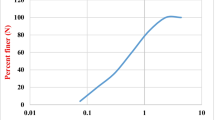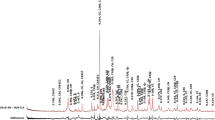Abstract
Lime mortars are currently used for both repairs to historic buildings and new construction. An important mortar property is workability. Lime mortars are often described as highly workable, however, due to the many variables contributing to workability, this is difficult to quantify. Workability largely depends on water content, and this will greatly affect compressive and flexural strengths, which in turn will determine the overall quality and durability of a mortar. The objective of this paper is to examine the relationship between workability and strength of naturally hydraulic lime (NHL) mortars in order to optimize their properties for a more efficient use in building. To this aim, mortars of several hydraulic strengths were mixed with different water contents in order to vary flow diameters and characterize workability. Compressive and flexural strength were then tested to measure the effect of the initial flow on the strength of the hardened mortar. This paper demonstrates that NHL 3.5 and 5 mortars require a flow value close to that of 185 mm prescribed by the European standards whereas NHL 2 mixes require a significantly lower value. This paper concludes that one universal flow value is inadequate when trying to optimize strength of NHL mortars and that, in order to optimize strength, mortars should be mixed to attain a different flow diameter for each hydraulic strength. However, other properties such as bond strength and water retention need to be considered before unique flow diameters are prescribed to lime mortars of different hydraulic strengths.
Résumé
Les mortiers de chaux sont employés de nos jours tant dans le domaime de la restauration de bâtiments anciens que de la construction neuve. Une propriété essentielle d’un mortier est sa consistance/maniabilité. Les mortiers de chaux sont généralement décrits comme extrêmement «maniables». La difficulté est de donner une estimation quantitative de ce terme du fait de la multiplicité des facteurs mis en jeu et de l’absence d’essais normalisés. La maniablité d’un mortier de chaux dépend en grande partie de sa teneur en eau qui elle-même influence certaines propriétés comme le retrait ou la résistance à la compression et à la flexion, déterminant à leur tour la qualité et la durabilité du mortier. L’objectif de cet article est d’étudier la relation existant entre maniabilité et résistance mechanique d’un mortier de chaux hydraulique naturelle afin d’optimiser ses propriétés. Pour ce faire, des mortiers de chaux de résistance hydraulique et de teneurs en eau différentes ont été gâchés de façon à faire varier le diamètre d’écoulement initial et à caractériser la consistance. Des essais en compression et flexion ont été effectués pour étudier la résistance mechanique du mortier durci en fonction de l’écoulement initial. Les résultats obtenus indiquent que, alors que les mortiers de chaux NHL 3,5 et 5 demandent un écoulement initial proche de 185 mm comme recommandé par les normes européennes, ceux à base de NHL 2 exigent une valeur nettement inférieure. En vue d’optimiser leur résistance, les mortiers de chaux devraient donc être gâchés de façon à obtenir un diamètre d’écoulement spécifique à chaque chaux hydraulique employée. Ceci contredit la recommandation issues des normes de malaxage actuelles préconisant un diamètre d’écoulement initial unique quel que soit le type de chaux. Cependant, d’autres propriétés comme le retrait du matériau et l’adhérence à l’interface mortier-maçonnerie doivent être prises en compte avant de préconiser un diamètre d’écoulement spécifique à chaque mortier de chaux de résistance hydraulique donnée.



Similar content being viewed by others
References
Ashurst J, Ashurst N (1988) Practical building conservation, vol 3, Mortars, plasters and renders. Gower Technical Press, Aldershot
Holmes S, Wingate M (1997) Building with lime: a practical introduction. 2nd edn. ITDG, London
Pavía S, Bolton J (2000) Stone, brick and mortar. Wordwell, Bray
Pavía S, Treacy E (in press) A comparative study of the durability and behaviour of fat lime and feebly-hydraulic lime mortars. Mater Struct
Cullen R, West R (2004) The development of a rheology tool for characterising the rheological properties of fresh concrete. In: Mason SL (ed) Annual transactions of the Nordic Rheology Society, Iceland, vol 12, pp 71–78
Cullen R, West R (2005) Development of a hand-held rheology tool and suitable testing criteria. In: Dhir RK, Jones MR, Zheng L (eds) Proceedings of the 6th international congress: repair and renovation of concrete structures, Dundee, Scotland, 2005. Thomas Telford, London, pp 195–202
Carolinas Concrete Masonry Association. http://ccmaonline.com/NewPages/weather.html
BS EN 196-1 (2005) Methods of testing cement. Part 1. Determination of strength
BS EN 459-2 (2001) Building lime. Part 2. Test methods
Hanley RC (2006) The relationship between workability and bond strength of lime mortars. MSc Thesis, University of Dublin, Trinity College Dublin
BS EN 459-1 (2001) Building lime. Part 1. Definitions, specifications and conformity criteria
Acknowledgments
The authors would like to thank Dr. H. M. Schiffner, of the Institut für Kalk- und Mörtelforschung e. V., Köln, Convenor of CEN TC 51/WG 11/TG 1 for taking this research into consideration within the EN 459-2 framework. This research was funded by the US-Ireland Alliance under the G. J. Mitchell Scholarship 2004–05. Materials were graciously donated by St Astier Limes, France, and The Traditional Lime Company, Ireland. The testing was carried out in the Dept. of Civil, Structural and Environmental Engineering, Trinity College Dublin. The authors thank Mr. Chris O’Donovan, for facilitating our laboratory work; Mr. Martin Carney for his help with testing in the Soils Laboratory; Mr. Eoin Dunne for his assistance with testing in the Materials Laboratory and Mr. Dave McAuley for building equipment. Their help is much appreciated. The authors also thank Ms. Luice Chevert for translating the abstract.
Author information
Authors and Affiliations
Corresponding author
Rights and permissions
About this article
Cite this article
Hanley, R., Pavía, S. A study of the workability of natural hydraulic lime mortars and its influence on strength. Mater Struct 41, 373–381 (2008). https://doi.org/10.1617/s11527-007-9250-0
Received:
Accepted:
Published:
Issue Date:
DOI: https://doi.org/10.1617/s11527-007-9250-0
Keywords
- Natural hydraulic lime mortars
- Workability
- Water content
- Initial flow
- Compressive and flexural strength.




